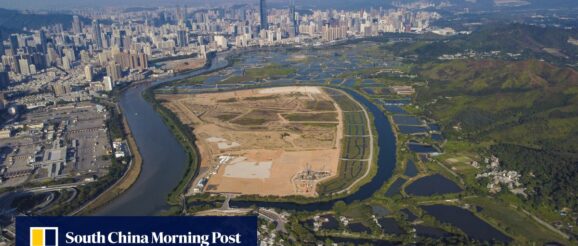Hong Kong Science Park to open new branch in Shenzhen cooperation zone, area to house 40 projects tied to innovation drive | South China Morning Post

The two sections of the park are separated by the Shenzhen River, with the Hong Kong park spread out across 87 hectares (214 acres), and the Shenzhen one occupying 302 hectares. Five Hong Kong universities have already set up 10 innovation centres in the park on the northern side.
The State Council announced a raft of measures last week aimed at creating leading research clusters involving Hong Kong and Shenzhen by 2035. Beijing has also expressed hopes that a collaboration mechanism between the two cities could be put in place by 2025 to draw world-class talent in research.
But yawning differences in laws, regulation and immigration are hampering the cross-border movement of resources. On Tuesday, Qin and Sun Yuning, deputy director of the General Administration of Customs, promised easier and faster immigration and clearance to facilitate the flow of people, funds, vehicles, equipment and data between the Shenzhen and Hong Kong parts of the Hetao zone.
There would also be a special data channel for researchers in the Shenzhen part to visit overseas websites for research purposes, they said.
Hong Kong’s No 2 official Eric Chan Kwok-ki, who flew to Beijing to attend the press conference, said the financial hub would join hands with Shenzhen to turn the park into a world-class innovation platform.
Speaking to the Post, Chinese Big Data Society executive chairman Witman Hung Wai-man hailed Beijing’s support for the development of the Hetao zone.
“We do not see it as a competition between the two places over innovation development,” said Hung, also former principal liaison officer for Hong Kong at the Shenzhen Qianhai Authority.
“Instead, both sides can complement each other through collaboration and exchange of talent and capital.”
Professor Lau Siu-kai, a consultant at Beijing’s semi-official think tank the Chinese Association of Hong Kong and Macau Studies, said the development showed that Beijing placed great emphasis on better collaboration between the two neighbouring cities.
“The central government is assuming a direct leadership, promotion, planning and coordinating role and making the cooperation of both places, particularly on high technology, as a prime national strategy,” he said.
“This [cooperation zone development] is also taking on particular strategic importance in the context of a technological war against China by the United States and the West.”
Beijing first proposed the border park in 2017 when Chinese President Xi Jinping called for jointly building a common development zone when attending the signing ceremony of the Greater Bay Area framework.
The Greater Bay Area refers to Beijing’s scheme to link the cities of Hong Kong, Macau, Guangzhou, Shenzhen, Zhuhai, Foshan, Zhongshan, Dongguan, Huizhou, Jiangmen and Zhaoqing into an integrated economic and business hub.
At the 40th anniversary of the Shenzhen Special Economic Zone’s establishment in 2020, Xi emphasised the construction of the Shenzhen-Hong Kong Science, Technology and Innovation Co-operation Zone in the Hetao area.
